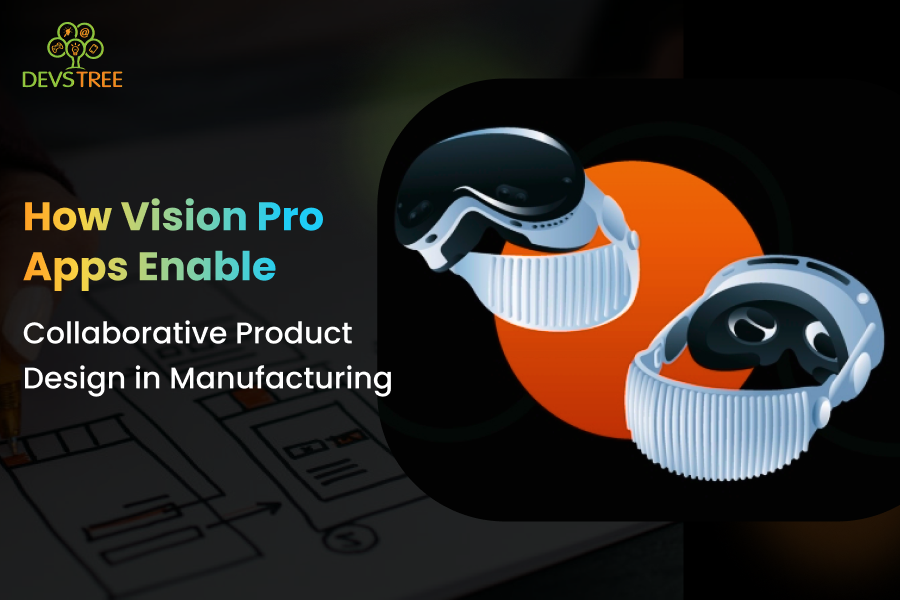Collaboration is supreme in the manufacturing industry. As technology improves at a rapid pace, technologies like the Vision Pro apps are transforming how teams work on product design. The applications bring innovation to life by integrating virtual reality (VR), augmented reality (AR), and immersive features that help streamline the design process. Learn how Vision Pro apps allow collaborative product design and optimize manufacturing workflows.
Bridging the Gap Between Teams:
Manufacturing often requires multiple teams: designers, engineers, and project managers, all working on the same product. Vision Pro apps bridge the gap between these teams by creating a shared virtual workspace. Everyone can visualize 3D product designs in this space, make real-time adjustments, and provide feedback instantly. This eliminates endless email threads or long meetings, saving time and improving efficiency.
For example, an automotive design team can have a car’s prototype in place using Vision Pro applications. Designers can highlight aesthetics, while engineers ensure functionalities and feasibility; everyone’s input is seamlessly integrated toward teamwork and further communication.
Real-time Design Iteration:
The main delay in traditional manufacturing design is related to the nature of iterative processes. Designers make a prototype, share it for feedback, wait for feedback, and adjust. Vision Pro apps eliminate the delays associated with these iterative processes because teams can work in real time.
With augmented reality overlays and shared 3D models, changes are made instantly for all stakeholders. For instance, if the factory team catches a flaw in the design of a machine, it can highlight such flaws directly in the virtual model. The design team then tweaks the prototype immediately without making costly mistakes in production downstream.
Improved Visualization:
The apps under Pro enable an immersive experience for users to easily grasp. Throughigns. Using AR and VR, such applications would allow teams to examine a product from every sand through such 360-degree viewing, not an iota is missed.
Imagine designing a heavy machine. Engineers can use Vision Pro to simulate the machine’s operation in various environments. They can also determine which parts might wear out too quickly or which areas can be optimized for better performance. Such detail leads to quality products and efficient, practical designs.
Collaboration Across Distances:
Manufacturing teams are often spread across multiple locations in today’s global economy. Vision Pro apps make remote collaboration easy. Team members can join a shared virtual space from anywhere in the world. Whether it’s a designer in Germany or an engineer in the US, everyone can contribute as if they were in the same room.
For example, a multinational electronics company can integrate its global teams for product design into Vision Pro apps. As collaboration across distances is supported by reduced travel costs, faster decision-making and consistency in design standards can be achieved.
Streamlined Feedback and Approval:
The approval process for a product design may take time. Vision Pro apps simplify this by offering interactive presentations. The app enables stakeholders to view designs, comment on the need for change, and approve the final versions. Features such as annotation tools and version tracking guarantee transparency and accountability.
Consider a scenario where a company is designing a new consumer gadget. With Vision Pro apps, stakeholders can virtually test the product, explore its features, and provide feedback instantly. This accelerates the approval process and helps bring products to market faster.
Training and Onboarding:
Applications such as Vision Pro are useful besides design, however, for training as well as an onboarding basis for new members they offer the highest form of realistic simulation of these new team members’ roles or part of the broader design process – and reduce onboarding curves accordingly, aligning one with the general project goals.
For instance, a manufacturing company can use a Vision Pro app to guide technicians through assembling a complex product. Interacting with a virtual prototype can help trainees practice the process without risking damage to actual equipment. This can enhance their skills and save resources.
Sustainability and Cost Savings:
Vision Pro apps contribute to sustainability by reducing the need for physical prototypes. Traditional prototyping often involves waste: materials, energy, and time. Virtual prototypes eliminate this waste, making the process more eco-friendly.
Vision Pro apps also save costs by minimizing errors. Early identification of design flaws reduces the need for costly revisions during production. Companies can also cut travel expenses by enabling remote collaboration.
The Future of Manufacturing Collaboration
With Vision Pro apps, manufacturing teams approach product design from a new angle. They enable better collaboration, improve efficiency, and reduce costs. These features make them one of the necessities for modern manufacturing. As more innovation occurs within these apps, we can see more advanced features that will streamline workflows to a greater degree and drive innovations.
If you’re in the manufacturing industry and haven’t explored Vision Pro apps yet, now is the time. Embrace this technology to stay ahead in a competitive market and deliver exceptional products that meet customer expectations.
